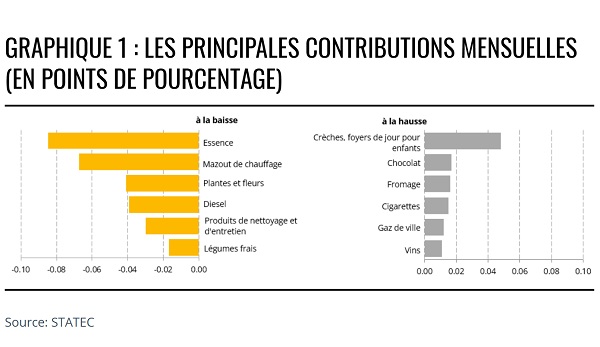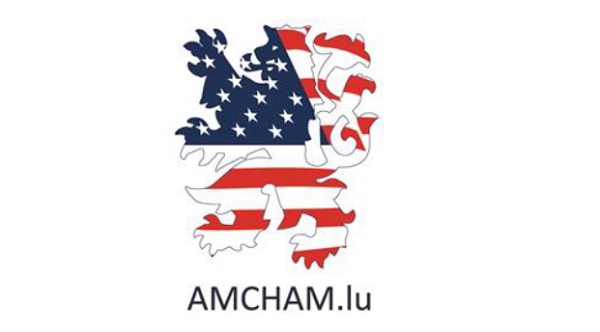 Credit: STATEC
Credit: STATEC
On Monday 7 April 2025, Luxembourg's national statistical institute, STATEC, reported that the annual inflation rate fell to 1.3% in March 2025 - down from 1.7% in February.
In March, the national consumer price index, calculated by STATEC, fell by 0.2% compared to the previous month. STATEC attributed this change to the sharp decline in petroleum product prices.
Petroleum product prices dropped by 3.4% compared to February. Household fuel bills fell by 6.0% over one month. At the pump, the price of diesel decreased by 3.7% and the price of a litre of petrol fell by 4.5%. Town gas, on the other hand, increased by 1.0% compared to February. Over one year, the prices of petroleum products in the index were 2.7% lower.
Moreover, seasonal price fluctuations have had a visible impact on the monthly inflation rate. Cut flowers, the prices of which had risen in February for Valentine's Day, recorded a decline of 7.8%, and accommodation prices dropped by 2.5% in March. Conversely, crèche and "maison relais" childcare prices rose by 4.0%.
Food prices rose by 0.2% compared to February. Butter (+2.7%), chocolate (+4.5%), rice (+1.1%) and cheese (+1.3%) recorded the strongest price increases, while fresh fish (-3.4%), fresh vegetables (-2.1%) and breakfast cereals (-2.4%) witnessed price drops. Compared to March 2024, food prices increased by 0.9%. Prices of other supermarket products, such as cleaning and maintenance products (-2.4%), fell in March.
The annual inflation rate thus stood at 1.3% in March, compared to 1.7% the previous month. The annual core inflation rate fell by 0.2 percentage points to 1.5%. The general index for March, expressed in a base of 100 in 2015, was 124.21 points. The half-year average of the index linked to the 1.1.1948 base rose from 1011.57 to 1012.69 points.
STATEC indicated that the next wage indexation will be triggered when the value of 1013.46 is reached and said it was "very likely" that there will be an indexation of salaries in May 2025.
STATEC will publish an initial estimate of the annual inflation rate at the end of April and will confirm, if necessary, the triggering of a new wage indexation.








